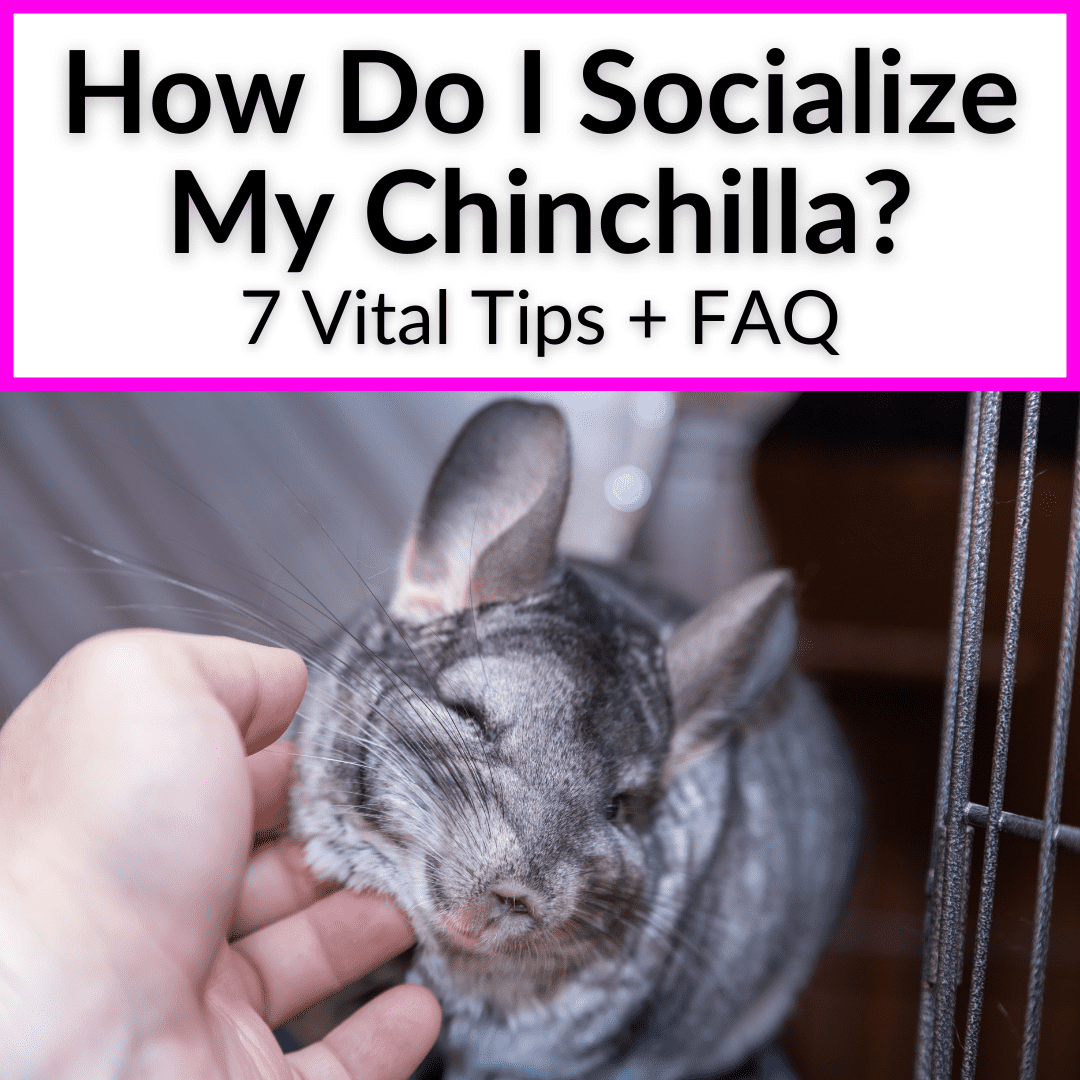
You only have to check out forums, Facebook groups, or blogs frequented by chinchilla owners to get a sense of the frustration this can cause.
But it doesn’t have to.
It’s true that it will take some time to properly socialize your chinchilla. There is no quick fix.
But it’s not a difficult process. Just a somewhat slow one.
That said, you can make it much smoother and much easier on both you and your pet.
Keep reading to learn how to socialize your chinchilla the right way.
Contents
How Do I Socialize My Chinchilla?
Socializing a chinchilla requires patience. You should begin by interacting with your chinchilla with the cage closed and offering a treat for social and interactive behavior.
As your chinchilla responds, you can start opening the cage and allowing it to come to your hand. Pretty soon, you’ll be able to socialize with your chinchilla out of the cage.
That’s right, my fellow chinchilla owners. Patience is key.
Don’t fret. I plan to break everything down in this post. I’ll explain exactly what all of that means and give you the tips and tricks you need to socialize your chinchilla quickly and effectively.
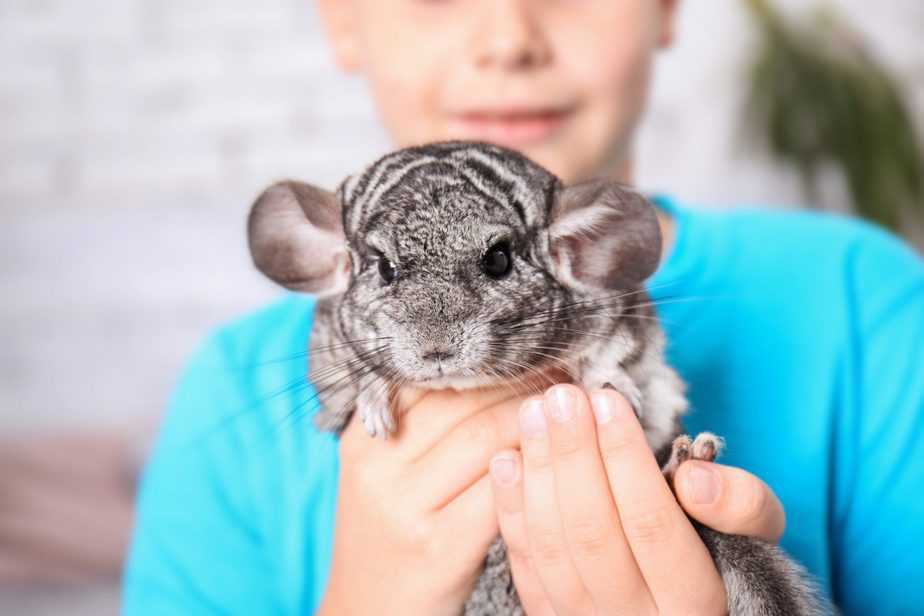
Let’s begin with the 7 most critical tips for socializing a chinchilla effectively. I already touched on the first one above.
#1: Patience Is Key
Patience is everything when it comes to owning a chinchilla. Nothing happens overnight.
This isn’t necessarily a negative, considering the long ownership and bond you have ahead of you. These rodents live for nearly 20 years with proper care.
And without patience, trying to socialize your chinchilla is going to be a frustrating process.
Depending on how you execute the socialization process, it can take weeks or longer. This also depends heavily on where you adopt your chinchilla.
Begin by doing nothing more than speaking to your chinchilla through the cage and offering a treat for positive social activity and responses.
This is critical during the early phases when your chinchilla is simply attempting to adjust to its new environment.
A chinchilla’s senses and tiny brains are in overdrive upon arriving in their new homes. They need to get used to all the sounds, smells, and even visual aspects of their new environment.
Allowing them to get comfortable with their environment first will go a long way towards effectively socializing your chinchilla with less difficulty.
So, to recap, be patient and move at your chinchilla’s comfort level and speed. Not the speed you prefer.
#2: Effort Means Everything
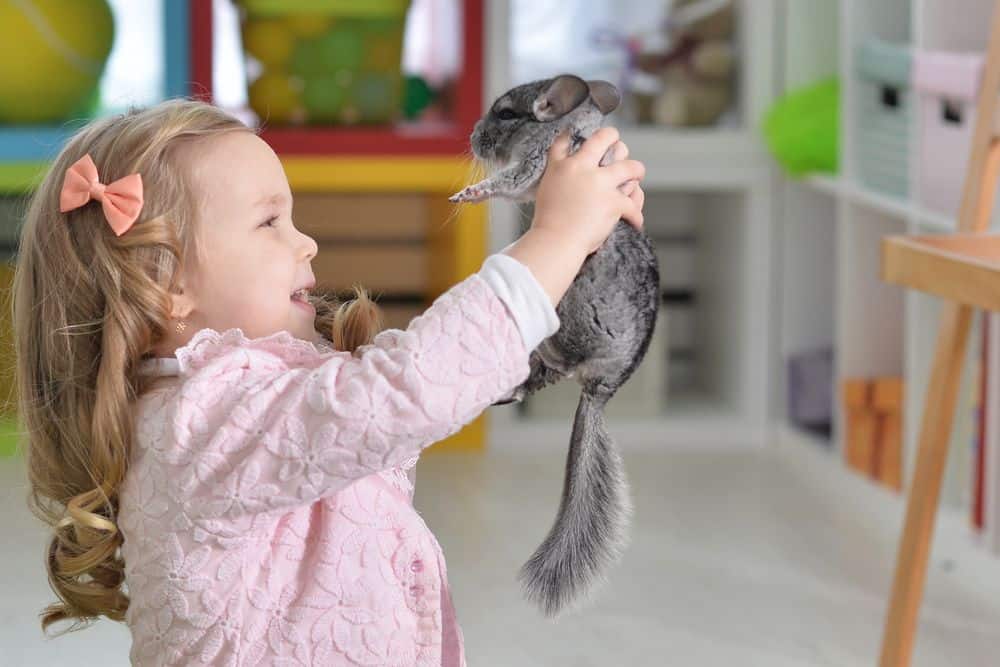
If I knew the number of chinchilla owners who give up during the process, I’d surely let you know. However, I don’t have the slightest clue, and I honestly don’t think it’s many if I had to guess.
But, I do believe that many chinchilla owners get frustrated during these initial phases. Actually, I don’t believe that. I know that.
I’m active enough in social media groups and forums to see the comments of new chinchilla owners getting frustrated that their new pet isn’t jumping for joy all over them in the first few weeks of arriving home.
Listen, people. This isn’t a new puppy. It can be soon, but it’s not in the beginning. Trust me, I know the difference because I also own two dogs that I’ve had since their puppyhood.
Your effort means everything with a chinchilla, just as it does with a new dog or even a cat.
Building a bond with other pets requires this same effort, including walks, training, and even just cuddling.
The same goes for your chinchilla. You need to put in the effort.
You need to be interacting and talking to your chinchilla in the beginning and continue to so in order to build trust and build your bond.
They will begin recognizing your voice and becoming more comfortable with you. The more effort you put into it, the more results you are going to get out of it.
It’s just like with anything else in life. I know our lives get busy, and somedays you can’t provide a full playtime session out of the cage.
And perhaps, in the beginning, you miss a night or two of talking to your chinchilla through the cage.
That’s perfectly fine. It happened to me, it happens to others, and it’s going to happen to you as well.
If it doesn’t, you’re one of the lucky ones who isn’t constantly busy and I’m incredibly jealous of your schedule and freedom.
Put in the effort of talking to your chinchilla, gently petting it, and conditioning it to understand that you are not a threat. The results will follow.
#3: Give Some Love And Receive Some Love
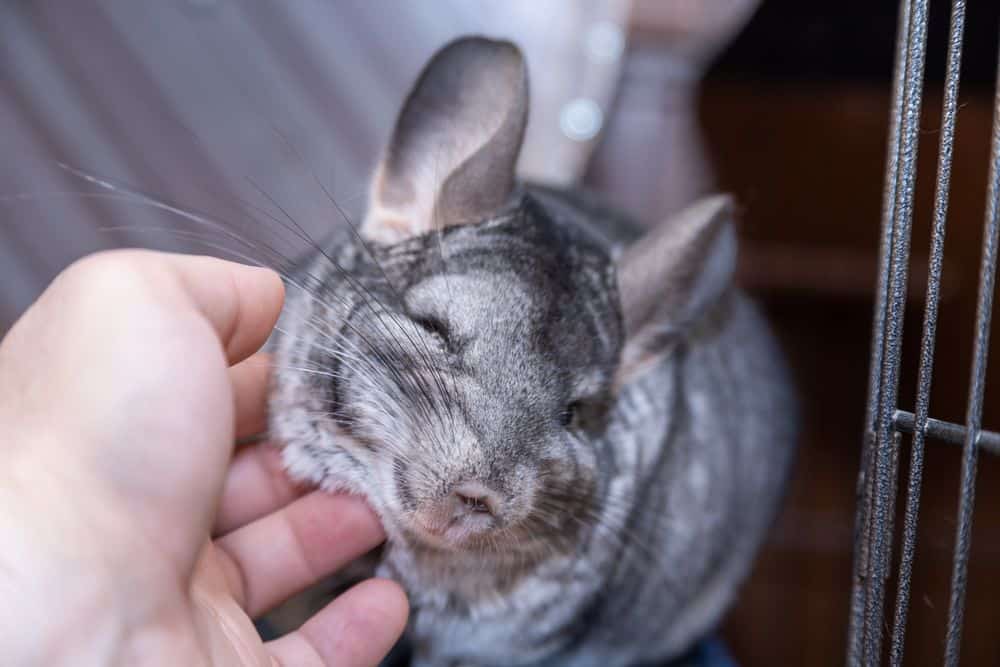
This ties back into tips #1 and #2. Patience and effort. However, it’s still important to point out.
It works the same as any relationship works in life. It takes some love and affection from both parties to build a lasting and trusting bond that can last a lifetime.
As I said before, I completely understand that things come up. You can’t do everything you should every day. But in general, you need to show love toward your chinchilla to receive love back.
Think of life from your chinchilla’s point of view in the wild dating back decades.
These tiny rodents are the hunted. Chinchillas are used to running for their lives and trusting no other creature except the chinchillas running for their lives next to them.
Heck, this even includes humans, who hunted chinchillas specifically to make beautiful fur coats out of them.
Why should they trust anyone?
Have sympathy towards these behaviors and temperaments and slowly help your pet understand that you are the most critical person in its life.
Allow some time to get past your chinchilla’s natural defense mechanisms and I promise your chin will return the love and affection back to you much faster than you might believe.
#4: Proper Care From All Angles Is Essential
Chinchillas are extremely smart animals and have an IQ much higher than many people believe.
I’d argue they rank at the top of all rodents, and I have owned a few throughout my childhood and early adulthood.
You need to provide the best care possible from every angle to ensure your chinchilla is not only becoming socialized, but in the correct state of mind and body to respond to socialization, happiness, and love.
This means cleaning your chinchilla cage regularly and providing the proper diet.
How does your mood get impacted if you aren’t being cared for properly?
What if you haven’t showered in a few days or have a stomachache from eating the incorrect foods?
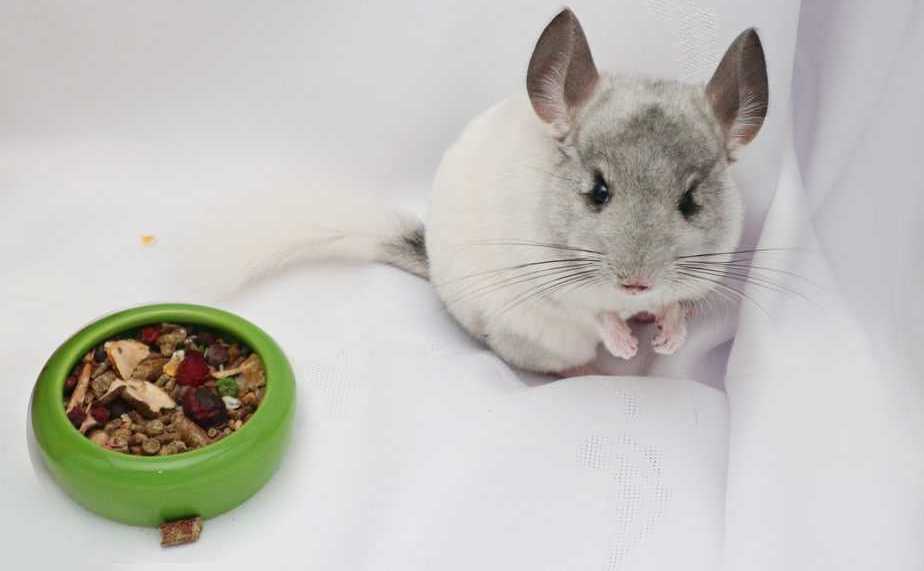
I bet it impacts your desire to want to socialize and interact with others. Perhaps even a small amount of depression sets in?
Well, your chinchilla is no different. You need to provide good care to ensure everything gets off on the right track in terms of socializing your chinchilla properly.
Yes, a chinchilla, can get depressed just like most creatures roaming this earth, including you and I.
Chinchillas are known to have a diverse and robust range of emotions they can display. Heck, even jealousy can set in at times.
Ensure that your chinchilla gets a dust bath 2-3 times per week, at a minimum. Ensure you clean the cage adequately and often.
Also, ensure that you are provide enough activities within the cage to keep your chinchilla mentally stimulated.
Chinchillas love to jump as much as possible, so a proper size chinchilla cage is essential to encourage these behaviors.
Allow it to climb by providing plenty of ledges and other chinchilla related accessories.
To make your life easy once again, I’ve created a few additional resources on each of these items. They will send you in the right direction and teach you what you need to know.
Here they are.
- If you need to learn more about chinchilla hygiene and dust baths, read this post.
- Learn about the proper chinchilla cage cleaning schedule here.
- You can view my recommended chinchilla cages here.
- You can check out my post about the best accessories to place inside of your chinchilla’s cage here.
Now, let’s move on to the different options you have when it comes to adopting your chinchilla.
#5: Consider Your Adoption Options
I am currently about a 50/50 believer in the notion that adopting a chinchilla from a breeder is always superior to adopting a chinchilla from a pet store, like Petco or Pet Smart.

I believe you can effectively socialize a chinchilla regardless of where it came from.
The main argument you hear in favor of breeders, and one which I do believe is true, is that chinchillas that come from reputable breeders have likely already been socialized with many other chinchillas, a dedicated caretaker, and often even with children.
This was the exact case for me. My chinchilla breeder had young kids, in addition to teenage girls, all of whom helped care after a large selection of chinchillas that were bred specifically to sell.
Not to mention the fact that my chinchilla was already housed in a room with dozens of other chins.
Clearly, this helps. I’m not going to deny that fact. And it should be a consideration.
However, I don’t believe that you should always avoid pet store chinchillas at all costs. They may need a bit more love in the beginning, due to less previous interaction with humans and other chinchillas.
This plays right into a common question. At what age should you adopt a chinchilla?
You should adopt a chinchilla at the earliest age possible, which is after the kit (a baby chin) is no longer dependent on the mother for care.
This allows you to mold and cement desired behaviors and socialization into your chinchilla, beginning at a very young age.
Clearly, this a good thing. However, adopting a rescue chinchilla that’s much older also isn’t necessarily always a no-go.
That said, if you are worried that you might struggle with the socialization process, you might want to make the drive to a local chinchilla breeder for a chance at the process being slightly faster and less troublesome.
And how much does a chinchilla cost? You are looking at about $150 to $250 for the animal, with the color largely determining the price. The cage and accessories will add $200 to $400 more.
#6: Pay Attention To Chinchilla Body Language
Chinchillas are no different than humans in this respect. They communicate through body language just as you and I do.
It’s essential to recognize the signals and message your chinchilla is trying to send you.
Sounds and vocal cues such as barking, grunting, and whining can be strong indicators of what your chinchilla is trying to say and a sign that your chinchillas likes you or likes what you are currently doing.
Pay attention to these cues. For example, if your chinchilla is retreating from you towards its nest box inside the cage, that may mean to back off a bit, speak more calmly or simply try again another day.
Very often, a chinchilla is going to do this if it is feeling scared.
If a female chinchilla attempts to spray urine towards you, she’s also scared. This is a defense mechanism that is also common with chinchillas in the wild.
The same goes for a fur/hair slip. Chinchillas slip fur to help escape predators.
If you are trying to condition a chinchilla to enjoy being held and it is slipping fur, simply pet it, speak to it calmly, give it a treat, and place it back in the cage.
No need to overdo it in one day or cause too much stress for your chinchilla. You have a long time with your new furry friend and rushing the bond is never a good idea.
Pay attention to your chinchilla’s body language and respect what it is trying to tell you. Ultimately this is going to build a much stronger bond and make your chinchilla trust you much more.
Trust me, this tip can pay off big time.
#7: Consider Close Interactions To Speed Things Up
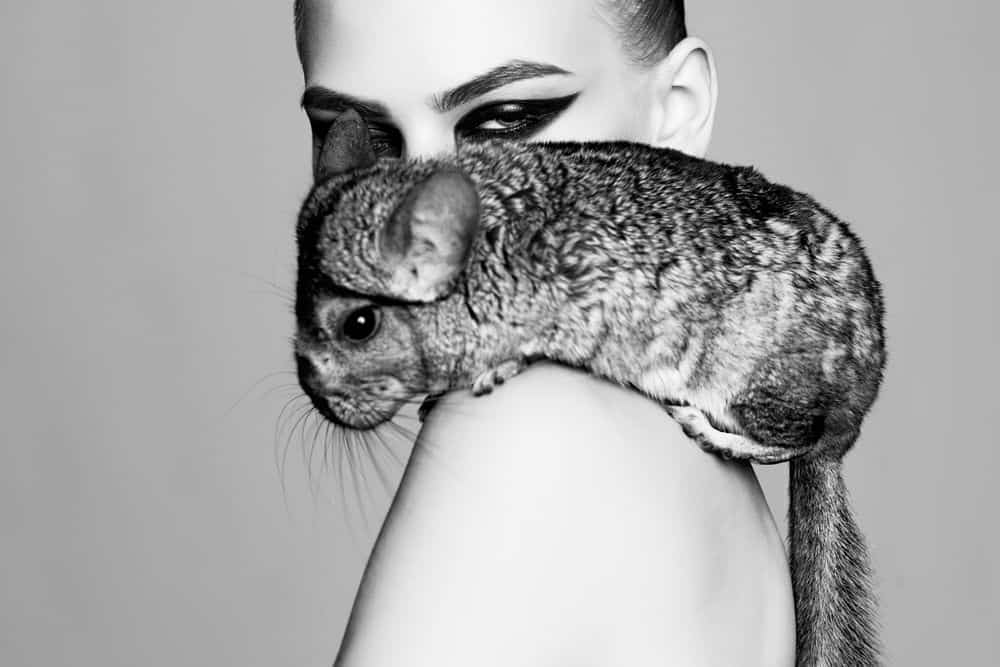
I give this tip in several of my blog posts and still believe it’s a secret weapon with chinchilla bonding.
You need close interaction in the beginning phases of socializing a chinchilla.
If you have too large of an area for playtime, they will simply jump off walls and interact from a distance.
For those of you who don’t know the story, I purchased my chinchilla without planning for a chinchilla safe playroom in advance.
This simply means that I had exposed wires and certain areas of the room where my chinchilla could find a way to harm herself.
I purchased a pop-up animal play tent for no other reasons except to allow my chinchilla time out of the cage to play in a safe manner.
Well, I now have a safe area in my basement for my chinchilla to play, but I still use the play tent often, and have been for two years.
In my opinion, forcing your chinchilla to begin interacting with you in a more limited space, without having 400 square feet to roam, speeds up the process dramatically and socializes a chinchilla effectively.
Obviously, don’t overdo it using the play tent, either. This doesn’t mean you need to be taking naps or forcing holding and other cuddling techniques.
But letting your chinchilla out to play in the play tent, and merely speaking to it and allowing it to come to you by sitting in your lap when it chooses, can build that trust much faster.
My playpen is an excellent accident that I stumbled onto. And I want everyone else to have the same opportunity. That’s why I bring it up a lot on this site.
My article on the best pop-up animal play tents includes the exact one I use. It is the first one mentioned.
It’s durable (it has already lasted me over 2 years), very breathable, and has plenty of space for interaction.
It is especially good for those of you who haven’t fully proofed a room for playtime.
Trust me, consider getting a playpen and use it, and I can nearly guarantee that socializing your chinchilla will happen quickly and be a walk in the park for you.
Common Related Questions
We are going to finish this article by answering the most common questions we get in relation to the socialization of chinchillas.
How Do You Tame Your Chinchilla?
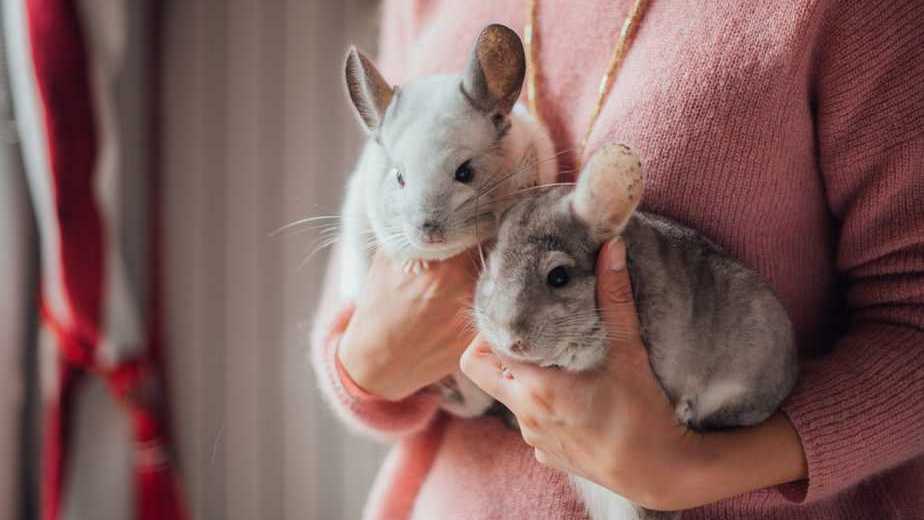
The next question I often get on this subject is how to tame a chinchilla.
This can mean several different things. It’s essential to understand the context of the question.
If you are referring to your chinchilla being tame and interacting with humans and your family, you just need to follow all the tips I’ve provided for you above.
If, however, you are referring to how to calm your chinchilla down in general when it is out for playtime, that’s an entirely different story.
This is likely never going to happen until your pet reaches old age.
Think about it. It is locked in a cage for most of its life. Of course it is going to enjoy itself and go a bit wild when it is out for playtime.
Wouldn’t you?
There is no need to try and control this or tame your chinchilla in this fashion.
Simply allow it to do its thing when it is out for playtime and then return it to its cage and go about your day.
Most new chinchilla owners shouldn’t even be concerned with this topic, unless you are struggling with biting or other undesired behaviors.
In my opinion, the wild behavior a chinchilla can display during dust baths, or just jumping off walls during playtime, is a blast to watch.
In fact, I seriously doubt you will still have the same desire to tame your chinchilla a few months into ownership. Enjoy it and roll with it, and both you and your chinchilla will be happy.
Do Male And Female Chinchillas Socialize Differently?
For the most part, no. Male and female chinchillas behave similarly. However, a pregnant chinchilla or a female chinchilla in heat may behave differently when it comes to socializing.
In general, male and female chinchillas both make great pets and both are capable of becoming socialized.
Nevertheless, this is a question that arises frequently.
Should you get a male or female chinchilla?
You should get whichever sex you prefer. As far as socialization and how the chinchilla will behave, you are unlikely to notice any difference.
Both male and female chinchillas make for excellent family pets and deserve a loving home. You might need to learn how to determine chinchilla gender. It’s not hard, but it’s not completely obvious either.
How Do You Interact With Your Chinchilla?

Interacting with your chinchilla is not rocket science, my friends.
To interact with a chinchilla, you need to speak to it and allow it time out of its cage every day. You should also provide the necessary accessories and toys for your chinchilla to play with.
Once socialization is progressing, begin handling, holding, and petting your chinchilla to interact with it.
Outside of this, the sky is the limit. Do what you prefer and what you think your chinchilla will enjoy. Nobody, including myself, is going to understand your chinchilla better than you.
When interacting with your chinchilla, only do what seems natural and what your chinchilla prefers/enjoys.
Do Chinchillas Need To Be Let Out Of Their Cage?
This is another common question. And the answer is a resounding “yes!”
You should let your chinchilla out of its cage every single day, for at least 30 minutes. And make sure to let it out into a safe chinchilla-proofed room or a playpen.
Missing a day or two is okay from time to time. But try not to miss too many days. Allowing your chinchilla out of the cage regularly promotes optimal health and happiness.
Socializing Your Chinchilla: Final Thoughts
At the end of the day, socializing a chinchilla is not overly complicated. It’s certainly achievable if you implement the tips that I have laid out for you here today.
Yes, it does take time and some patience, but overall, it’s 100 percent worth that effort.
Put in the time and love, and you will have a bond and a new family pet that can provide joy for the next two decades.
If you are currently on the fence about adopting a chinchilla in general, I can say from first-hand experience that they are one of the best pets to own. I highly recommend adopting a chinchilla.
What’s more, they are one of the easiest pets to care for.
I wish you the best of luck with your chinchilla adoption and ownership.
Share your thoughts and advice on socializing chinchillas.
Did I leave anything out that you believe to be essential for the readers to know about when it comes to socializing a chinchilla?
What further recommendations can you provide to make the process that much easier?
Be sure to share your thoughts, tips, concerns, and advice by dropping a comment below.
As always, Chili and I appreciate you stopping by and wish you the best of luck. Thanks again, and we will see you next time.
Tipings.Com says
Chinchillas aren’t nocturnal animals, they are crepuscular, which means when students go to school, they will sleep, and will be awake when they return. Is this true?